7 Interesting Stories Behind Famous Chinese Dishes
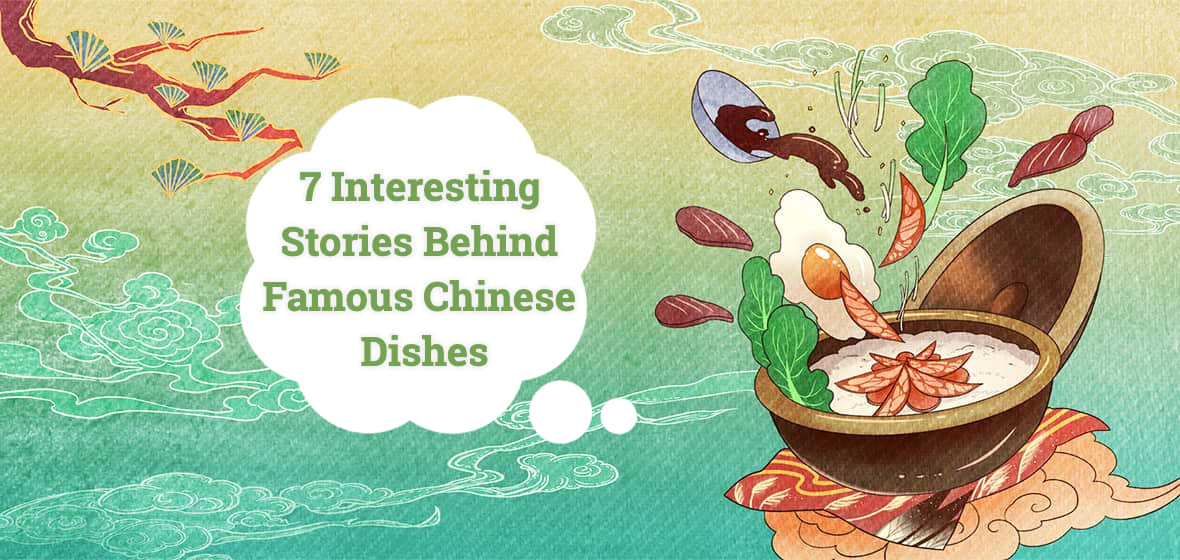
"If there's anything we (Chinese) are serious about in the world, it is neither religion nor learning, but food."
--Lin Yutang, linguist, novelist, philosopher, and translator
China is a place where food has always been culturally important, not only socially, but also in sacrifice and ritual, therefore, food is a way to understand and appreciate China and its culture in general. Chinese people like to talk about food. New dishes are invented by all walks of life, from literati and aristocratic figures to grassroots. Chinese cuisine is as diverse as their culture where every region writes up a new menu. Cooking styles, ingredients, flavors - all differ from region to region.
When you walk into an authentic Chinese restaurant, you are presented with a menu that may have an English translation but you have no clue of what most of the menu says. You may wonder if you’ll find ants in the dish of “Ants Climbing a Tree”, or find a lion’s head in “Lion Head Meatballs”. Most dishes are not as scary as they appear on the menu. More often than not, there has been a literal translation that does not make sense in English. One important note to keep in mind is that many Chinese dish names are derived from a story or local culture. Some ingredients can only be found locally, and many of the dish names are not even remotely related to what the dishes are. You’ll make the right choice if you learned the stories behind the dishes. Whatever the origins and stories of history tell us about their meaning is that some foods span the length of space and time.
Find out the fascinating stories behind the 7 popular dishes you may come across.
1. Jiaozi (Chinese dumplings) was formerly called "jiao er"
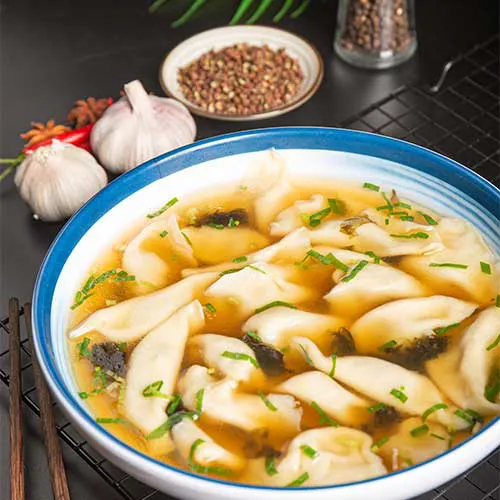 Jiaozi 饺子 (Chinese dumplings)
Jiaozi 饺子 (Chinese dumplings)
These Chinese dumplings known as jiaozi, are made with a wheat-based flour dough and filled with a stuffing of pork, beef, shrimp, or vegetables. It is commonly eaten during Chinese New Year and eaten all year round in the northern provinces. As legend tells it, during the Eastern Han Dynasty (25-220CE), there lived a famous physician of Traditional Chinese Medicine, named Zhang Zhongjing, who was returning to his ancestral village one winter. it was a difficult winter and many living in impoverished conditions were experiencing ill effects from the cold. To help people, Zhongjing took mutton, herbs, and chilis and wrapped them in the dough, forming them in the shape of an ear. He then steamed them to bind everything together and keep them warm. These steaming, pillow-like treats helped people overcome the cold conditions, while the herbs that Zhongjing put inside worked to improve blood circulation and prevent frostbite.
2. The delicious history of Kung Pao Chicken (Gong Bao Chicken or Kung Po Chicken)
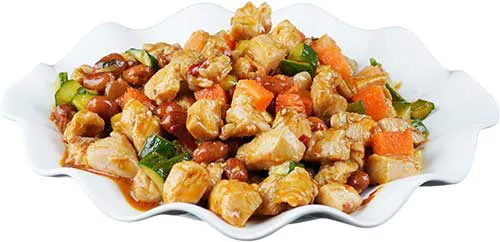 Kung Pao Chicken 宫保鸡丁
Kung Pao Chicken 宫保鸡丁
Kung Pao Chicken is a classic Chinese dish, that is spicy, made with chicken cut into small cubes, peanuts, vegetables, and chili peppers. This classic dish originates in the Sichuan Province. You can find different regional varieties across China.
It is believed that Kung Pao Chicken was named after Ding Baozhen (1820-1886), a governor in the late Qing Dynasty (1644-1911) of Sichuan Province. Ding Baozhen was a ‘foodie’ who loved eating diced chicken, peanuts and especially loved spicy flavors. During his time as governor, he frequently treated his guest with this dish. He was granted the title of Taizi Shaobao, also known as Kung Pao, which means the ‘Guardian of the Palace’. People named this dish to honor and remember him. When Donald Trump made a state visit in 2017, he was served the dish, of course, it was not the Americanized version.
3. Dongpo Pork (Braised Pork Belly) is named after Su Dongpo, a famous poet
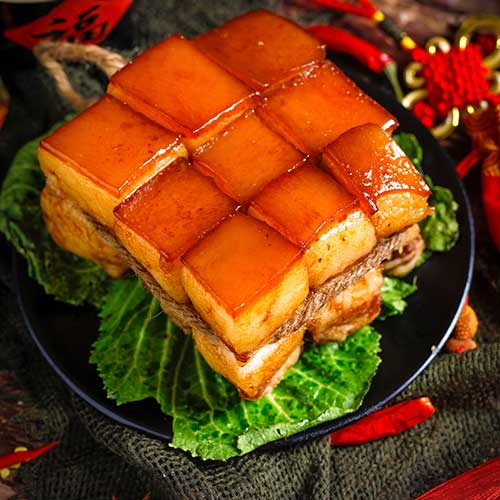 Dongpo Pork 东坡肉
Dongpo Pork 东坡肉
When it comes to pork consumption, China leads the world. According to some, it is estimated that an average Chinese person consumes 40 kilograms of pork per year, or they consume half of all the pork in the world. Pork is often served in Chinese meals, and Dongpo Rou (Braised Pork Belly) is one of the most popular dishes among them.
Dongpo Pork is named after Su Dongpo, a famous poet, writer, artist, and statesman who lived during the Song Dynasty (960-1127). He was also a famed gastronome, noted for inventing the braised pork belly dish, Dongpo Pork. As the story goes, one day Su had a pot of braised pork simmering on the stove when an old friend visited him and challenged him to a game of Chinese chess. As the challenging game consumed his focus, Su lost track of time and consequently overcooked his pork to the point where it gave off a fragrance as it began to burn, thus creating this culinary dish. The pork was rich in flavor, deep red color, tender and crispy, but not burnt. His friends named this fragrant dish after him. Su made this dish when he served as an official in Hangzhou which is the heartland of the country’s gastronomy. This dish can be found in many restaurants across Hangzhou, and in particular, at the Hyatt Regency Hangzhou, their signature dish is Dongpo Pork. The pork belly is carved into a pyramid shape and presented on a bed of baby bak choi, served with chestnut pancakes.
4. What is the story on Mapo Tofu
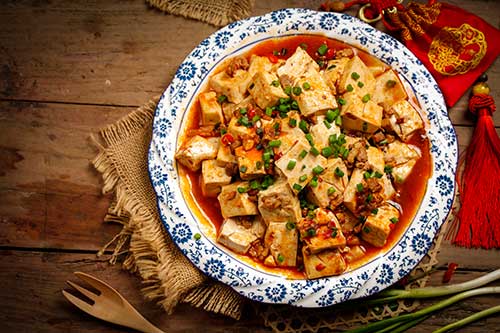 Mapo Tofu 麻婆豆腐
Mapo Tofu 麻婆豆腐
Mapo tofu is one of the signature dishes of Sichuan cuisine. Mapo Tofu is a popular dish from Sichuan Province, where spicy food is king and the signature spice of the region––the Sichuan peppercorn––gives dishes a unique "numbing" effect.
"Mapo" literally means "old lady whose face is covered with pockmarks," who suffered from smallpox as a child, leaving her disfigured. She lived in Chengdu, the capital city of Sichuan, in the middle of the 19th century. She operated a makeshift roadside café on the outskirts of town; her customers were mainly small tradesmen and porters. They often brought beef and tofu to the cafe asking Mapo to cook for them. Over time, Mapo mastered the unique tofu cooking technique and local people named the dish Mapo Tofu. For an authentic Sichuan style Mapo Tofu, the floral tongue-numbing Sichuan peppercorn is a must. Along with the fiery heat from the chili pepper, it provides a circus of sensation in your mouth.
5. Why is it Called Ants Climbing A Tree (Ma Yi Shang Shu)?
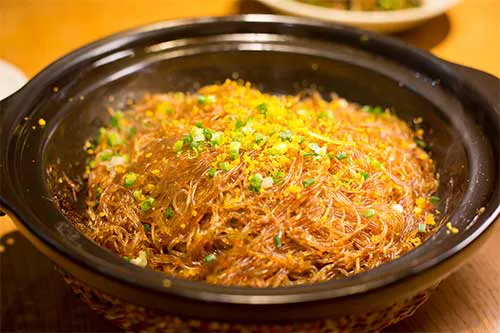 Ants Climbing A Tree 蚂蚁上树
Ants Climbing A Tree 蚂蚁上树
There is no ant or tree in this dish. “Ants Climbing a Tree” is a classic Sichuan dish consisting of glass noodles (vermicelli) in a delicious sauce with ground pork. The origin of this is accredited to Dou E, the heroine of the play The Dou'eyuan (Injustice to Dou E) in the 13th century. Dou E is a young widow, living with ailing her mother-in-law. Though impoverished, Dou E wanted to cook delicious dishes for her mother-in-law with the wish of helping her improve in health. One day, she did not have enough money to buy some pork but only a small piece. Back at home, Dou E minced the small piece of pork and stir-fried it with Chinese vermicelli. When serving this dish, her mother-in-law asked why there were so many ants on it. They were the finely minced pork, not ants. After explaining to her mother-in-law, she gave the dish the name “Ants climbing a tree.”
6. Beggar's Chicken (Jiao Hua Ji) : the story begins with a beggar
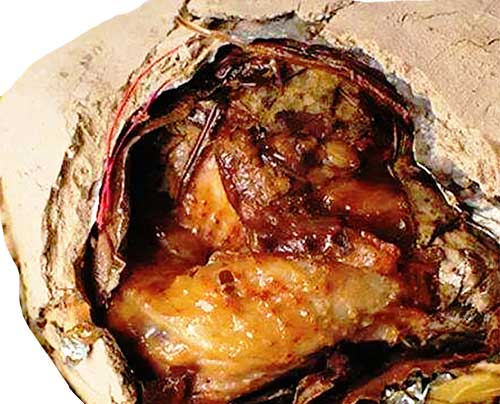 Beggar's Chicken 叫花鸡
Beggar's Chicken 叫花鸡
This dish is also known as yellow mud stewed chicken, a famous dish in Changshu, Jiangsu Province. The prepared chicken is covered with clay and lotus leaves and baked slowly using low heat. Preparation may take up to six hours. There are various legends surrounding the origins of beggar’s chicken. One version of the story is, a beggar stole a chicken from a farm but had no pot or utensils, he wrapped the bird in lotus leaves and packed clay or mud around it, set it in a hole where he had lit a fire, and buried it. When he dug up the chicken and cracked open the clay, he found the meat was tender and aromatic.
To roast an authentic Beggar’s Chicken, the process involves wrapping a whole spiced chicken in lotus leaves, then encasing it in mud and roasting it in an open fire. When fully cooked, the mud forms a hard shell around the chicken and then cracked open before revealing the deliciously roasted chicken inside.
7. Mao Xue Wang? What is it?
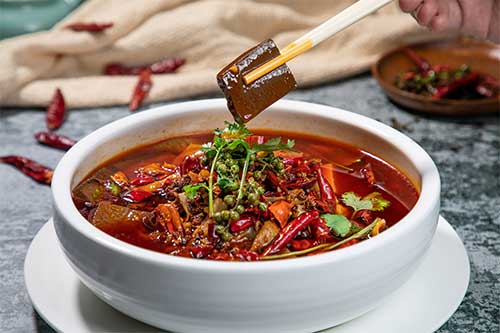 Mao Xue Wang 毛血旺
Mao Xue Wang 毛血旺
Mao Xue Wang is made of duck blood curd, tripe, chicken gizzard, and other organ parts simmered in a broth that is made of peppercorn and chili. It is popular due to the different textures featured in the dish – from silky (the blood curd – also known as ‘blood tofu’) to chewy (gizzard and hard) and even crunchy (tripe).
It is believed that in the 1940s, a period where nutrition was scare in China owing to continuous conflict, a butcher named Wang in Ciqikou Old town in Chongqing, sold his shop’s innards and scraps at very low prices. One day, Wang’s wife came suggested that these should be put into a soup, rather than sell them separately. They soon discovered that the broth was delicious. Not long after, the wife accidentally put duck blood curd into the soup broth only to learn that it made the soup silkier and more flavorful. The dish became known as Mao Xue Wang.

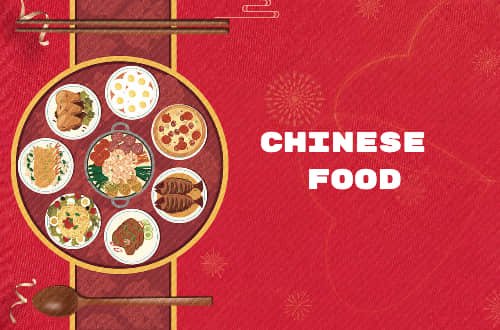 Chinese Food and Related Customs
Chinese Food and Related Customs 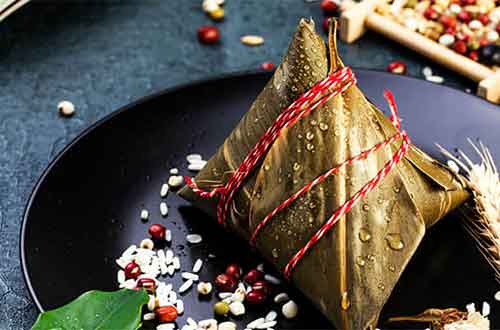 Popular Foods for Special Occasions
Popular Foods for Special Occasions 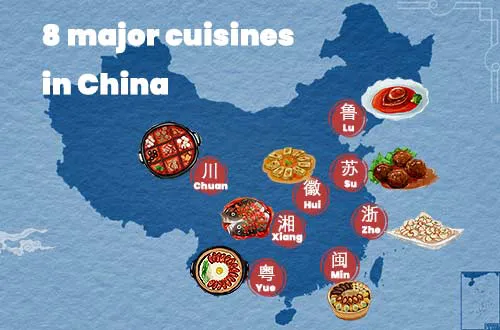 Regional Cuisines in China
Regional Cuisines in China 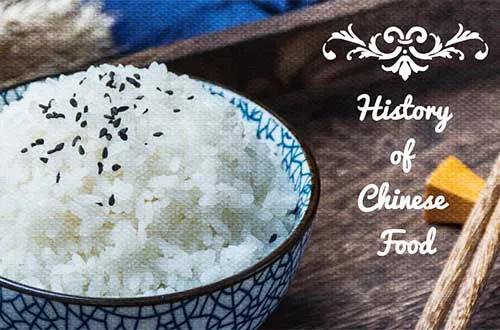 History of Chinese Food and Drinks
History of Chinese Food and Drinks